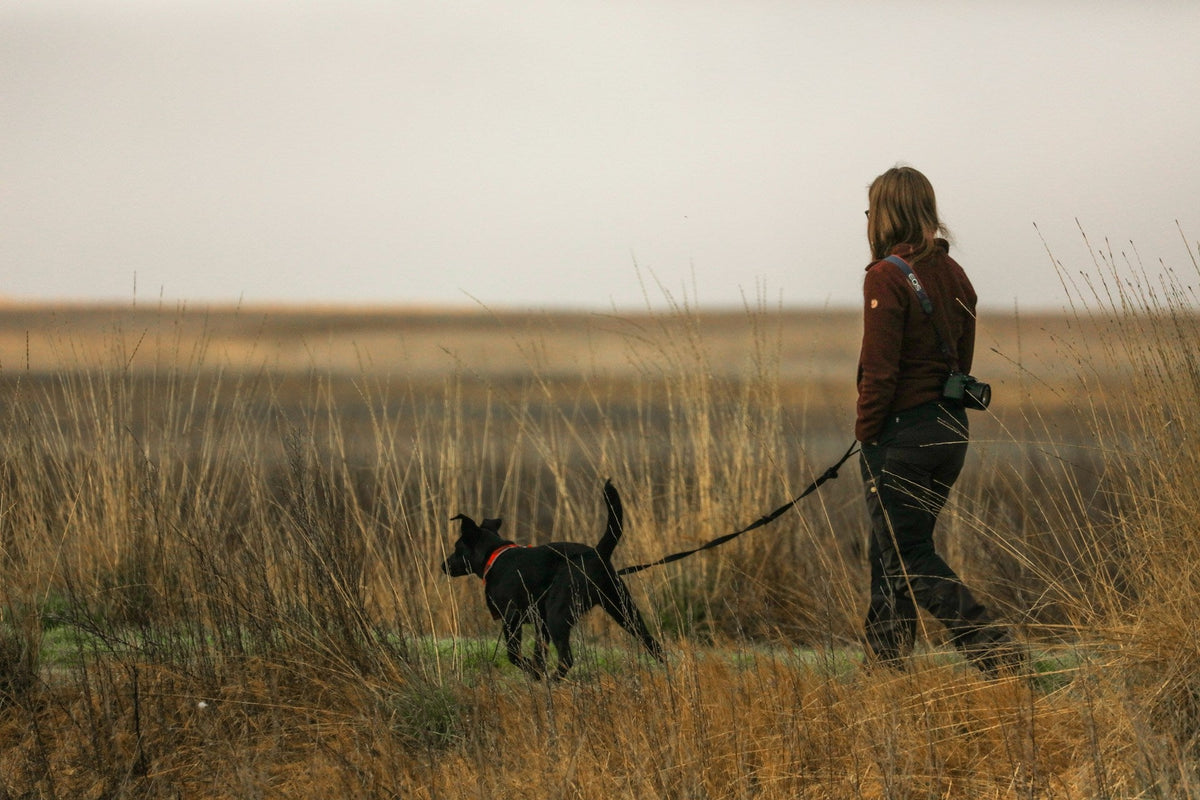

May is Mental Health Awareness Month–a reminder to check in with ourselves, slow our roll, and recognize the importance of emotional well-being. Yet, while we focus on our own mental health, it’s just as important to consider the emotional needs of our pets. Dogs can experience anxiety, stress, and even depression. Like us, they benefit greatly from movement and routine. The good news? Exercise–just in time for the warm weather–is an easy, but effective strategy to improve your dog’s mental health.
Understanding a Dog's Mental Health
Dogs are incredibly intelligent animals. They know the quickest way to get table food, the most strategic move to keep playing chase, and the most dramatic way to get sympathy. They thrive on structure, social interaction, and stimulation. However, when a dog lacks these basic needs, it can lead to behavioral problems and emotional distress. Common signs of poor mental health in dogs include:
Excessive barking or whining
Destructive behavior (chewing, digging, etc.)
Pacing or restlessness
Withdrawal or lethargy
Aggression or irritability
Many of these behaviors stem from anxiety, boredom, or lack of stimulation.
How Exercise Helps Your Dog
Exercise is more than just a way to keep your dog physically fit–it plays a crucial role in their mental well-being, too. Without enough physical activity, dogs may struggle with boredom or exhibit behaviors driven by frustration. Regular exercise, however, helps keep your dog’s mind sharp, their mood stable, and their behavior balanced.
Reduces Anxiety and Stress: Exercise helps regulate stress hormones like cortisol. Regular physical activity releases pent-up energy and provides a natural way for your dog to calm down, easing anxiety and promoting relaxation.
Prevents Destructive Behavior: Dogs that don’t get enough exercise may resort to destructive behaviors like chewing, digging, or barking excessively. Regular exercise provides an outlet for their energy, keeping them entertained and preventing unwanted behaviors.
Promotes Better Sleep: A well-exercised dog is more likely to sleep soundly. Physical activity helps them relax and settle down, ensuring they get the rest they need to maintain emotional balance and reduce restlessness.
Improves Mood: Exercise releases endorphins, which have mood boosting and natural pain relieving effects. A fun, active play session or walk can instantly boost your dog’s spirits and keep them emotionally stable.
Builds Confidence: Exposing your dog to new environments, people, and stimulation during exercise helps them build confidence in new and unfamiliar situations. This can help reduce fear in stressful encounters.
Encourages Socialization: Especially when in dog-friendly spaces like parks or walking groups, regular exercise exposes your dog to other animals and people. This helps strengthen their social skills, reduce fear, and build positive associations with new experiences.
Strengthens Your Bond: Whether it’s a daily walk, a jog in the park, or a game of fetch, these activities foster trust and communication. Spending quality time together helps deepen your emotional bond, making your dog feel secure and loved.
Our Favorite Ways to Move
Making exercise enjoyable for both you and your dog is key. Here are some creative ways to stay active together:
Daily walks – Simple, effective, and essential. Try different routes to keep it exciting for both of you. To add in some mental enrichment, practice obedience commands throughout your walk.
Hiking – Especially for the city folk, getting into nature can be a challenge. Hiking can offer new terrains and challenges to face.
Fetch – If your dog is ball-obsessed, fetch is an easy way to wear them out.
Agility or Obedience Training – These offer both mental and physical workouts, and they strengthen the bond between you and your dog.
Sports – Dog sports are a great way to not only exercise your dog, but can help you meet people with similar interests! Dock diving, nose work, and barn hunts are a few of the many sports available for dogs.
Takeaways
As we recognize Mental Health Awareness Month, it’s important to remember that emotional well-being isn’t just a human experience–our dogs feel it too. They may not speak our language, but their behavior and body language tell us everything we need to know about how they’re feeling. By prioritizing regular exercise, we’re not only supporting their physical health, but actively nurturing their emotional balance. From reducing anxiety and boosting mood to building confidence and promoting restful sleep, movement has the ability to transform your dog’s life.





